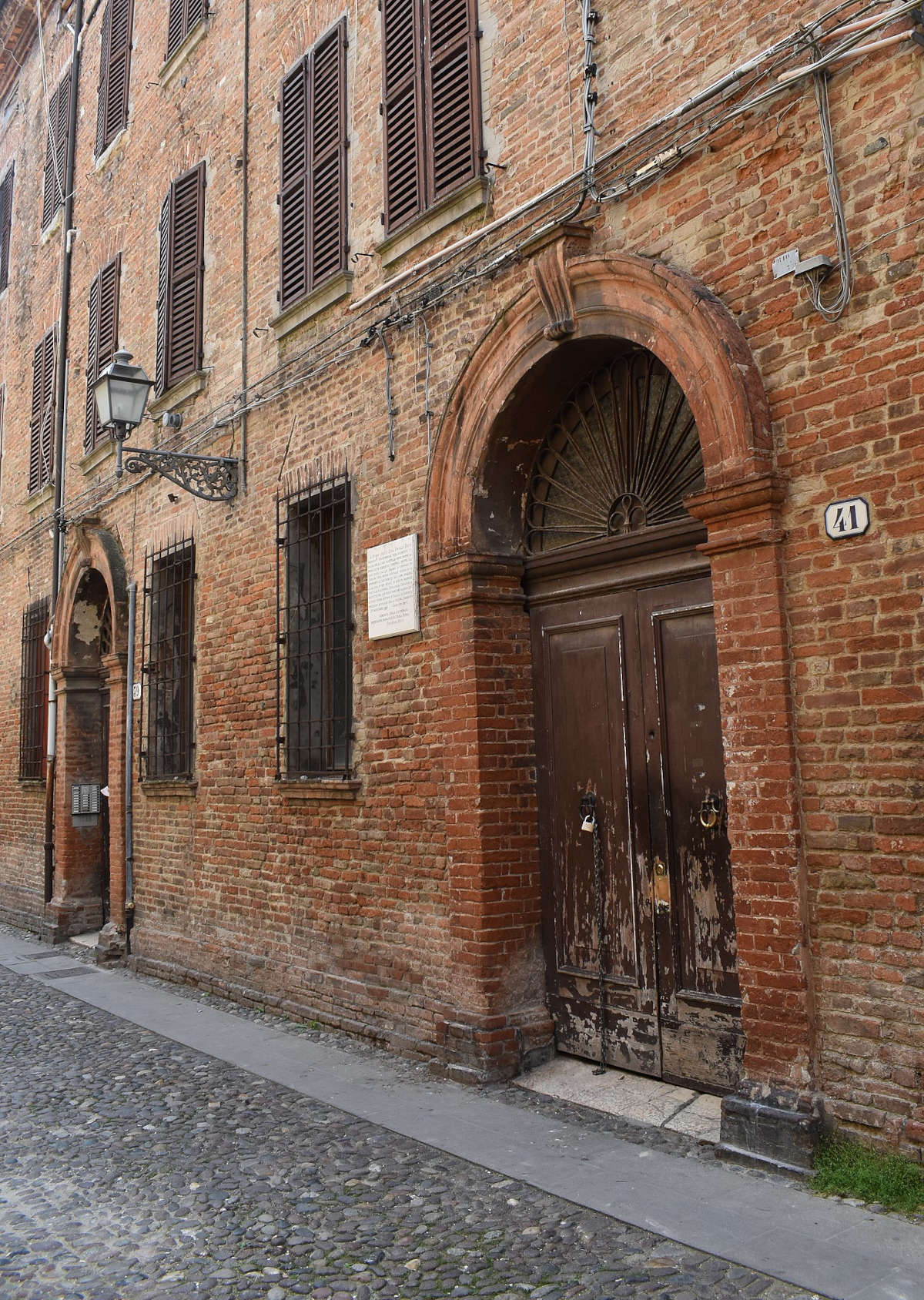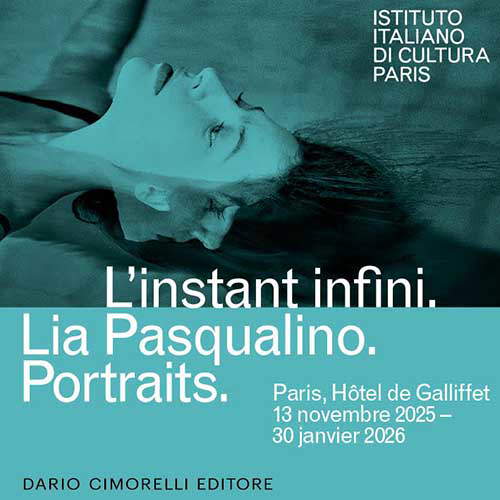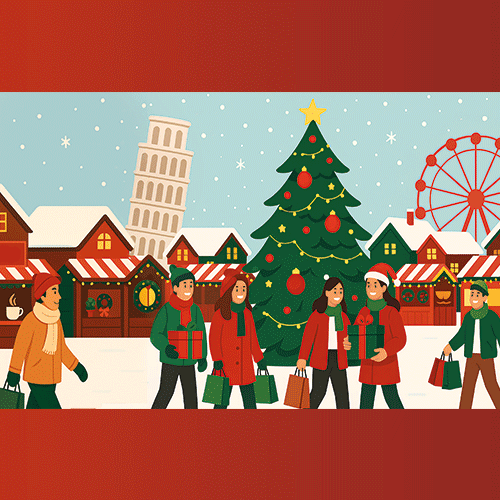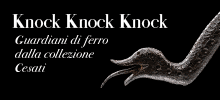
Jewish Ferrara, 10 places to know
A journey through ten emblematic places in Ferrara to discover the thousand-year history of its Jewish community, its traditions, dramatic events and its contribution to the city's culture.
By Redazione | 07/08/2025 16:17
Ferrara is the custodian of an extraordinarily rich and complex Jewish history, which has its roots in the 13th century and continues to leave an indelible mark on the city's urban and cultural fabric. The Jewish presence in Ferrara has been continuously attested since the Middle Ages, and its Jewish community is still one of the oldest and most influential in Italy. The golden age was experienced during the Este duchy, when the Este court, and in particular the dukes Ercole I and Ercole II, distinguished themselves by a magnanimous welcoming policy, offering refuge to numerous Jewish intellectuals, especially those fleeing from Spain in 1492. This period was marked by a fruitful cultural dialogue between Jews and the majority Christian culture.
However, history was not always one of tolerance. With the passage of Ferrara to the Papal States in 1597, the situation changed dramatically. After the issuance of various edicts, the construction of the Jewish ghetto began in 1624, the imposition of which took place a few years later for the approximately 1,500 Jews living in the city. From 1627 until the Unification of Italy, the Jewish community was segregated and forced into total reclusion from dusk to dawn, with intermittent periods of tolerance. The tragic return of the ghetto came with the racial laws of 1938, which initiated terrible persecution, culminating in the destruction of property and deportation of nearly 200 Jews between 1941 and 1945.
Despite the difficulties and tragedies, Ferrara's Jewish community has continued to be active and to contribute to the city's history and culture. Its heritage is now recounted and enhanced through an itinerary that includes historical, religious and memorial sites. For those who wish to delve deeper into this fascinating story of identity, memory and integration, a podcast produced by the City of Ferrara, with the contribution of Destinazione Turistica Romagna and the collaboration of the Jewish Community of Ferrara, the Institute of Contemporary History and MEIS, offers an intimate and in-depth look. Instead, below are the 10 places to see to learn about the history of Jewish Ferrara.
1. The Jewish Ghetto
Ferrara's medieval quarter still preserves the memories of the ancient Jewish ghetto, where the community was segregated from 1627 until the Unification of Italy. The main street of this historic district was Via Mazzini, which once housed the Jewish stores and commercial and social activities, still retaining its original structure. At the entrance to Via Mazzini, in the direction of Cathedral Square, was one of the five gates that closed the neighborhood, and a plaque between two arches commemorates the establishment of the ghetto.
In addition to Via Mazzini, Via Vignatagliata, Via Vittoria and Piazzetta Isacco Lampronti also formed the heart of the Jewish quarter. Walking through these streets, one can see old brick buildings, some simple and others adorned with richly decorated portals or wrought-iron balconies. This area also included the Jewish school, where Giorgio Bassani taught during racial segregation, the old unleavened bread oven, kindergarten, and hospice. The establishment of the ghetto was imposed by the Papal State after it regained control of the city in 1597. The racial laws of 1938 effectively brought the ghetto back into operation, marking a period of terrible persecution for the community. To walk these streets is to investigate the fruitful cultural dialogue between Jews and the majority culture, but also to touch upon the memories of a difficult past, which also lives on in Giorgio Bassani's stories.
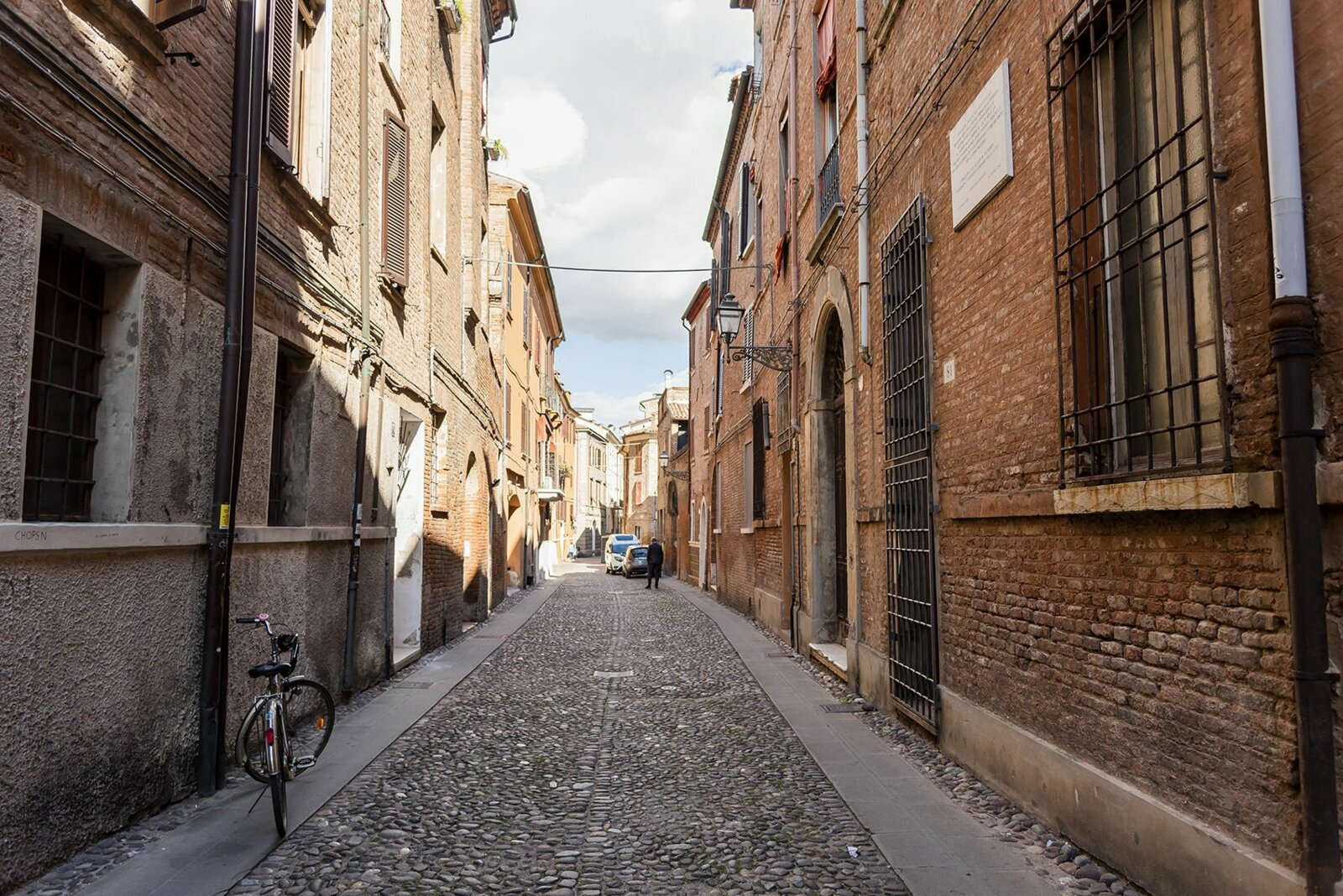
2. The complex of synagogues
The synagogues complex is located on Via Mazzini, number 95, in the heart of the old ghetto. The history of this sacred place dates back to 1485, when Roman banker Ser Samuel Melli bought a large house and donated it to the Jewish community of Ferrara to make it the seat of its institutions. Inside, the building houses three synagogues. Until 2012 it also housed the Jewish Museum, on the second floor of the building. Theformer German (Ashkenazi) Temple, the largest, is still used for the most solemn ceremonies. Characterized by five windows that illuminate the room from an inner courtyard and large stucco medallions with allegorical illustrations from Leviticus, the room features a 17th-century aron (a sacred closet) made of dark wood. Theformer Italian Temple is now a hall used for conferences and community celebrations, with three precious 18th-century arons restored. TheFanese Oratory, a small 19th-century temple, is used for Sabbath rites. Its door is from the Cento Synagogue, and the interior is decorated with stucco, with a prominent 19th-century pulpit. The synagogues were subject to looting and devastation during World War II, particularly in 1941 and during the Nazi occupation in 1943-44, when the Italian Scola was even used as a concentration camp. The complex has been closed for restoration since 2012.
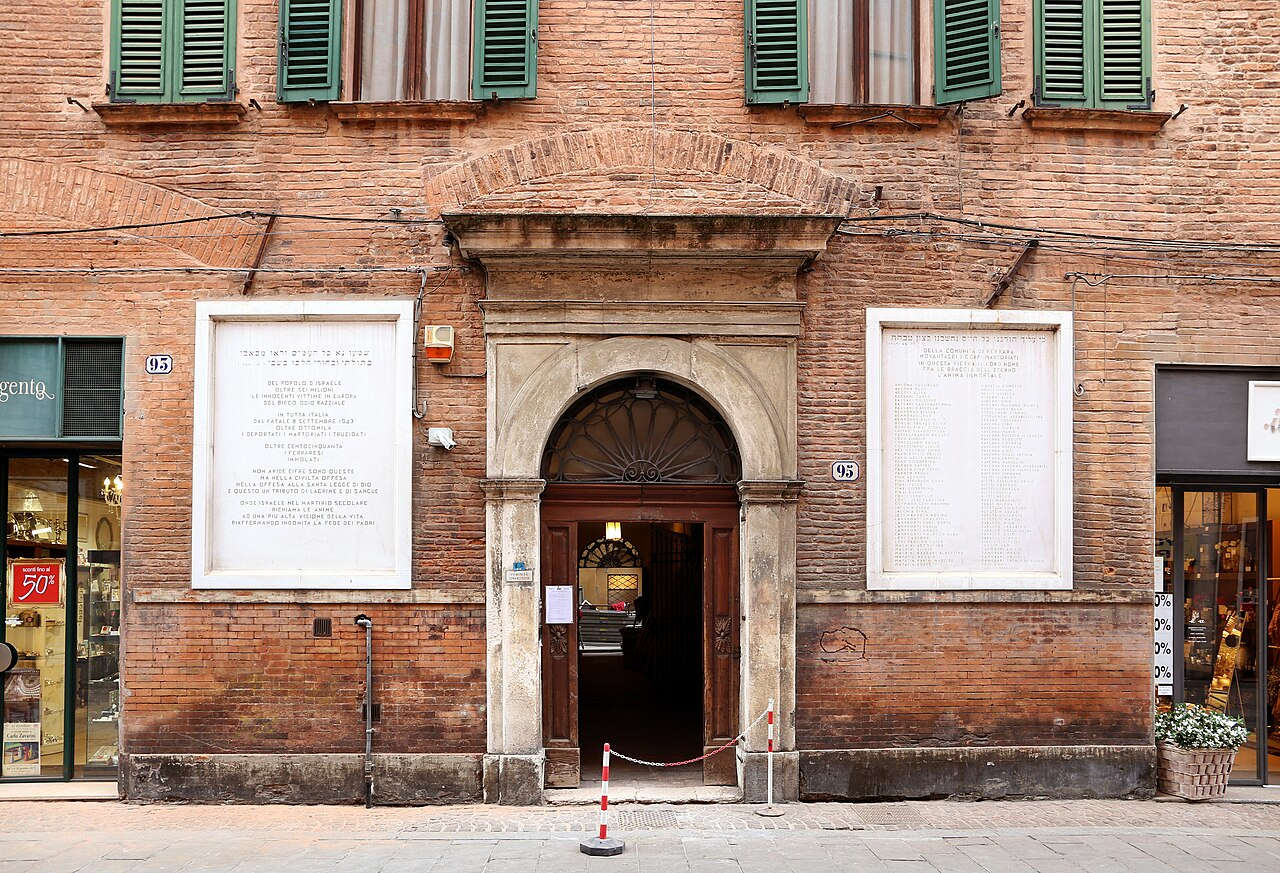
3. The MEIS - National Museum of Italian Judaism and the Shoah
The MEIS, Museo Nazionale dell'Ebraismo Italiano e della Shoah, is located in Ferrara at Via Piangipane, 81. Its main mission is to narrate over two thousand years of Jewish history in Italy, from its origins to the present day. The museum chronicles the stages of integration and cultural exchange, as well as the difficult periods marked by persecution and isolation, highlighting a common experience that affects everyone. The MEIS also serves as a place of remembrance and reflection on the Shoah, promoting intercultural dialogue and the value of diversity.
The choice of Ferrara as a venue is not accidental: the city encapsulates the diverse experiences of the millennial history of Italian Jews, characterized by an inextricable relationship with the city, culminating in the welcoming policy of the House of Este, but then overshadowed by the establishment of the ghetto and Nazi-Fascist persecution. The museum, which has been open with its first rooms since 2011, displays traditional and religious objects, numerous books and documents that reconstruct the history of the Ferrarese community. After the 2012 earthquake, much of the material previously displayed in the Jewish Museum at the Via Mazzini Synagogue Complex was transferred to the MEIS. The exhibition includes documentations on different aspects of Jewish life, from birth to marriage to moments of religious and communal worship.
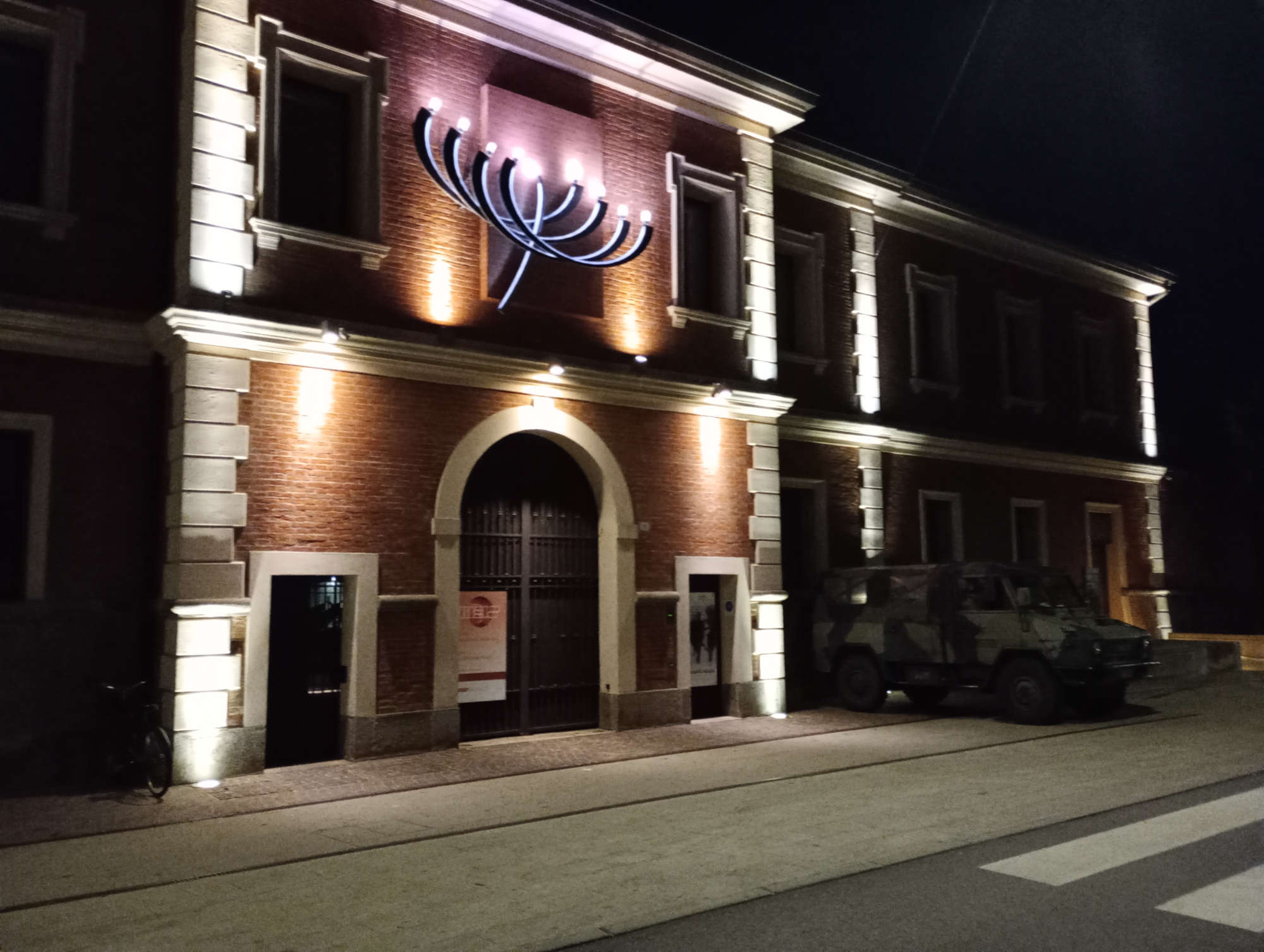
4. The former Israelite school
On Via Vignatagliata, number 33, is the building that once housed Ferrara's former Israelite school. This place represents an important piece in the history of Ferrara's Jewish community, as it is able to offer a glimpse into the characteristics of Jewish education, where tradition and modernity were intertwined to train new generations. Originally a kindergarten and elementary school, this medieval building took on a crucial role after the racial laws were enacted in 1938. As a result of these discriminatory regulations, the school became the only place where all Jewish students and teachers in Ferrara could continue their education.
Teachers at that time included a young and newly graduated Giorgio Bassani, who taught during racial segregation. The school offered a balance of religious and secular knowledge, placing the study of Torah and Hebrew alongside classical subjects. This institution was crucial for the transmission of values, cultural identity and openness to the world. Its operation was interrupted in 1943, with the arrest of the teachers, including Bassani, and the subsequent closure of the institution. A trip to this place provides insight into the uniqueness of an educational system that combined the preservation of cultural identity with the ability to look to the outside world.
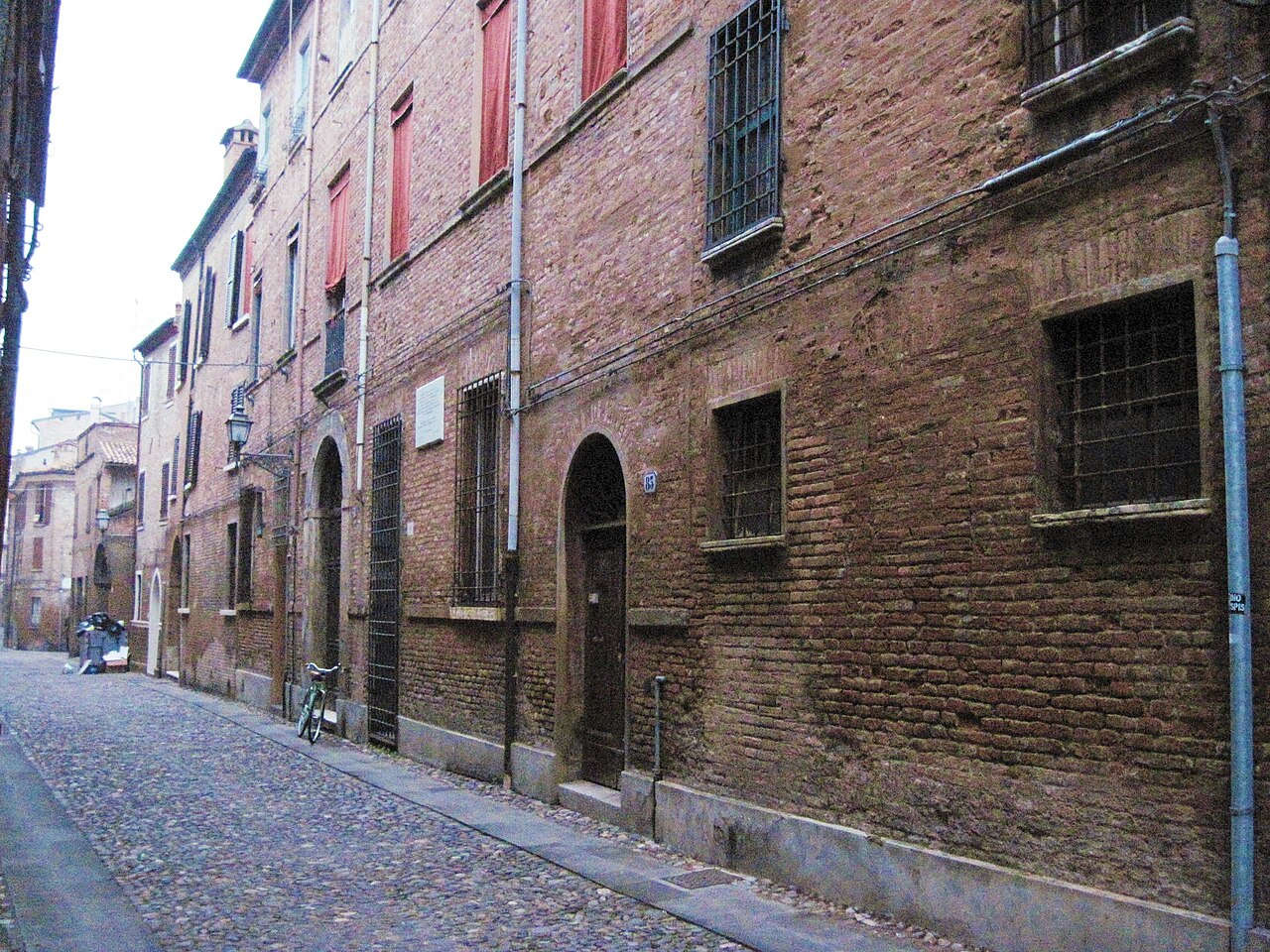
5. The House of Isacco Lampronti
Also at No. 33 Via Vignatagliata is the house of Isacco Lampronti (Ferrara, 1679 - 1756), a distinguished 18th-century rabbi and physician, whose importance to the Jewish community of Ferrara is evidenced by two plaques on the same street. Lampronti is famous for his monumental work, the Pachad Yitzchak, a halachic encyclopedia that profoundly influenced generations of scholars. His contribution to Jewish jurisprudence was significant, marked by a rare combination of traditional knowledge and a scientific approach. Isacco Lampronti was not only a prominent figure in the religious and academic fields, but also a committed educator and a citizen actively involved in the civic life of Ferrara. In an era of profound change, his thought aimed to harmoniously blend faith, culture and science, representing an example of erudition and modernity. Getting to know the figure of Lampronti through his home and intellectual legacy offers a unique perspective on the vibrant Jewish cultural life of Ferrara in the 18th century and the importance of the transmission of knowledge from generation to generation.
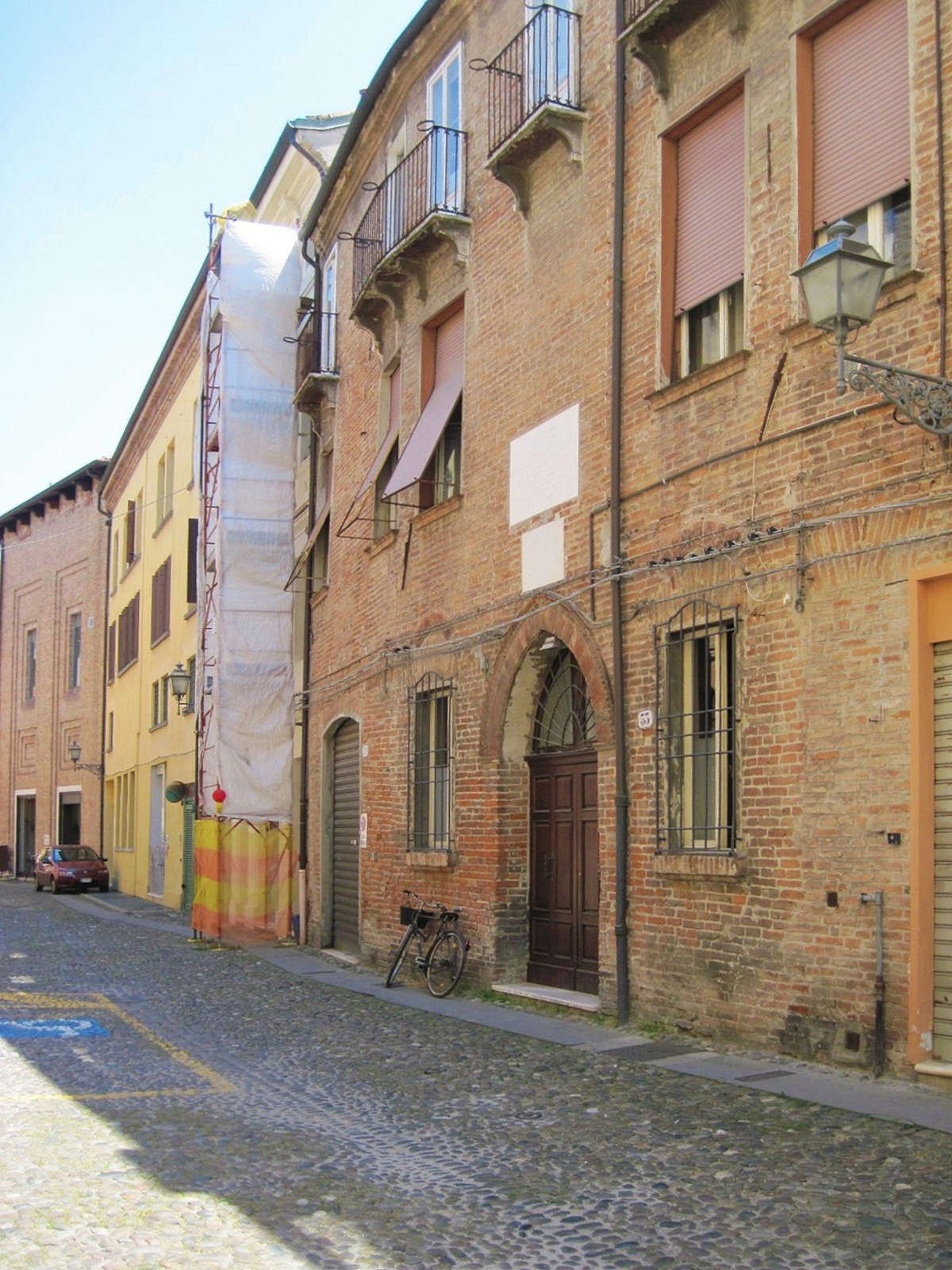
6. Borso d'Este's Column.
The Borso d'Este Column, located in the Cathedral Square, hides a little-known but deeply significant history that intertwines the monument with the local Jewish community. This column, erected in honor of Duke Borso, was built using materials from the graves of an ancient Jewish cemetery. This event, which occurred at the behest of the Inquisition in the 18th century, raises complex questions about the relationship between power, memory, and respect for minorities. The affair is an example of how official history can sometimes overlap and erase traces of other cultures and memories.
However, Ferrara chose not to forget this episode, so much so that a plaque was placed to symbolize the city's desire to rebuild relations with Ferrara's Jewish culture. The column on which Borso d'Este sits, with its layers of Jewish tombstones from ancient city cemeteries, is a silent reminder that invites reflection on the events of the past and the way the different communities coexisted in the city. It is a place that invites a journey through history, memory and the controversies that have shaped Ferrara's cultural heritage.
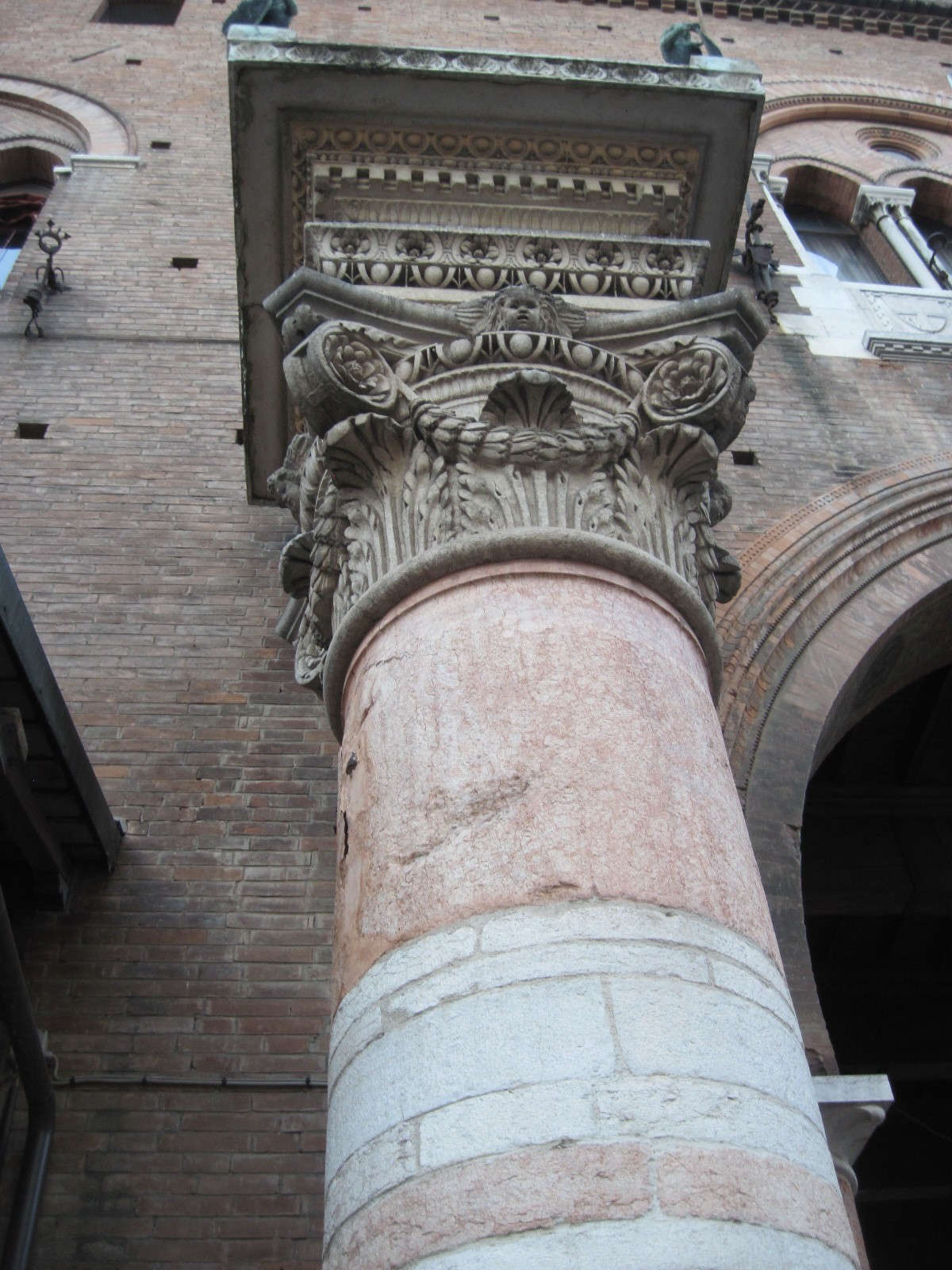
7. The Little Wall of the Estense Castle
The Muretto del Castello Estense, on Corso Martiri della Libertà, is the symbolic site of theNovember 15, 1943 massacre, also known as the Estense Castle Massacre, one of the most dramatic and brutal episodes in the history of Ferrara during the Nazi-Fascist occupation. This tragic event saw the summary killing of eleven innocent civilians, several of them Jews, in retaliation for the assassination of Igino Ghisellini, the Federale of Ferrara, two days earlier. Among the victims was Girolamo Savonuzzi, the then chief engineer of the Municipality of Ferrara.
News of Ghisellini's death, the circumstances of which are still disputed, triggered an immediate reaction from Alessandro Pavolini at the Republican Fascist Party congress in Verona, who ordered a reprisal in Ferrara. Fascist squads arrived in the city and, in the evening of November 14, arrested 74 Ferrara citizens believed to be anti-fascists or opponents of the regime. At dawn on November 15, ten of them were shot in front of the low wall of the Estense Castle and on the walls near the Rampari di San Giorgio. An eleventh civilian, Cinzio Belletti, was murdered on Via Boldini for failing to stop at the altar. The victims' bodies were left on display as a warning before being removed thanks to the intervention of Archbishop Ruggero Bovelli. This episode, considered by some historians to be the first civil war massacre in Italy, is recounted by Giorgio Bassani in the short story Una notte del '43 and captured in Florestano Vancini's film La lunga notte del '43. Four plaques on the little wall and columns of access to the castle moat commemorate the incident.
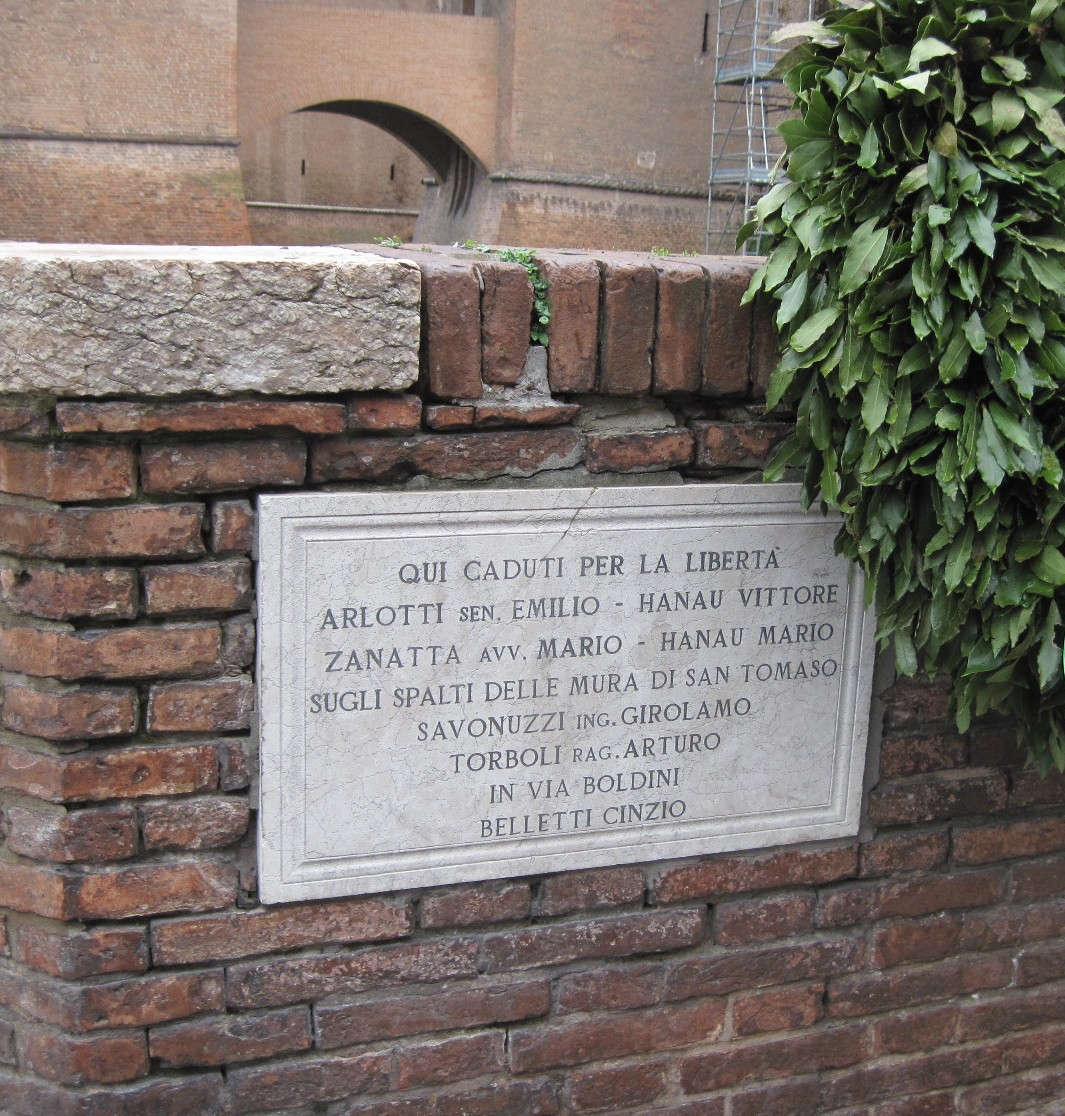
8. The Jewish Cemetery
The Jewish Cemetery on Via delle Vigne, number 22, is a place charged with history, memory and deep spirituality for Ferrara's Jewish community. It represents one of the oldest Jewish cemeteries in Italy still in use, with the earliest headstones suggesting an origin dating back to the 16th century, although the area was not officially acquired until 1626. The cemetery is a tangible symbol of the Jewish presence in the city and hosts the burials of illustrious figures, including that of writer Giorgio Bassani, honored by a monument created by Arnaldo Pomodoro and Piero Sartogo.
Accessible through a 1912 Art Nouveau portal, the cemetery is divided into five main areas that reflect different acquisitions over time. One can find recent burials, 19th-century tombstones, an area dedicated to the victims of deportations, and traces of an 18th-century area marked by the destructions of the Inquisition. Of the approximately 800 tombstones, many bear inscriptions in Hebrew, Italian or bilingual. This silent and contemplative place inspired Bassani himself, who poignantly described it in his novel Gli occhiali d'oro (The Golden Glasses), perceiving in it a sense of profound pacification. It is here that Bassani, in his literary reinvention, also places the monumental and stylistically eclectic tomb of the famous Finzi-Contini family, a symbol of their importance and of the complex affairs of the community.
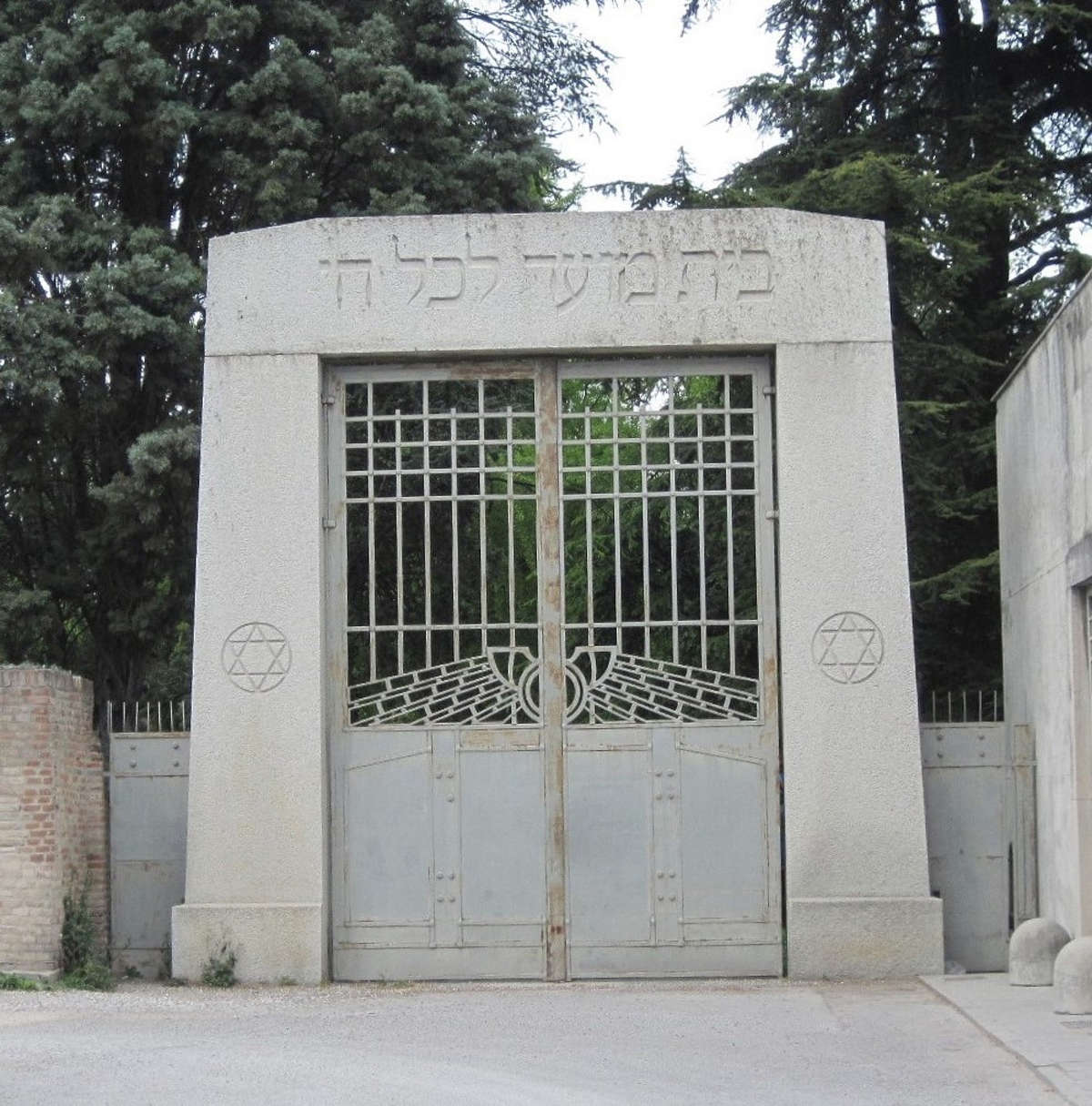
9. Bassani House
The Bassani House, located on the central Via Cisterna del Follo, is the former stately residence where Giorgio Bassani, along with his parents and siblings, spent his childhood and adolescence. This intimate place, deeply connected to the writer's biography, was a crucible for his poetry and high civic engagement, as recalled by a plaque posted by the Municipality of Ferrara in 2009. Bassani left this house in May 1943, when he was arrested because of his anti-fascist activities; after his release and going into hiding, his family, having escaped German roundups by hiding in a closet, joined him in Florence and then returned to Ferrara after the war. The house is also famous for the large magnolia tree that towers from the wall surrounding the inner garden, a tree that takes on a strong symbolic meaning in Bassano's famous poem The Racial Laws.
Although in some of his works, such as Behind the Door, Bassani places the dwelling on Via Scandiana, the building on Via Cisterna del Follo is the real and imaginative focus of his production. The house and its garden, with its high walls and domestic tortoise, became for Bassani a boundary between the common world and mystery, a source of dreams and nightmares. "It was [...] in those glances cast from the highest windows of the house, from the boldest dormers down to catch a secret, that we lived with our whole soul," Bassani wrote in his diaries.
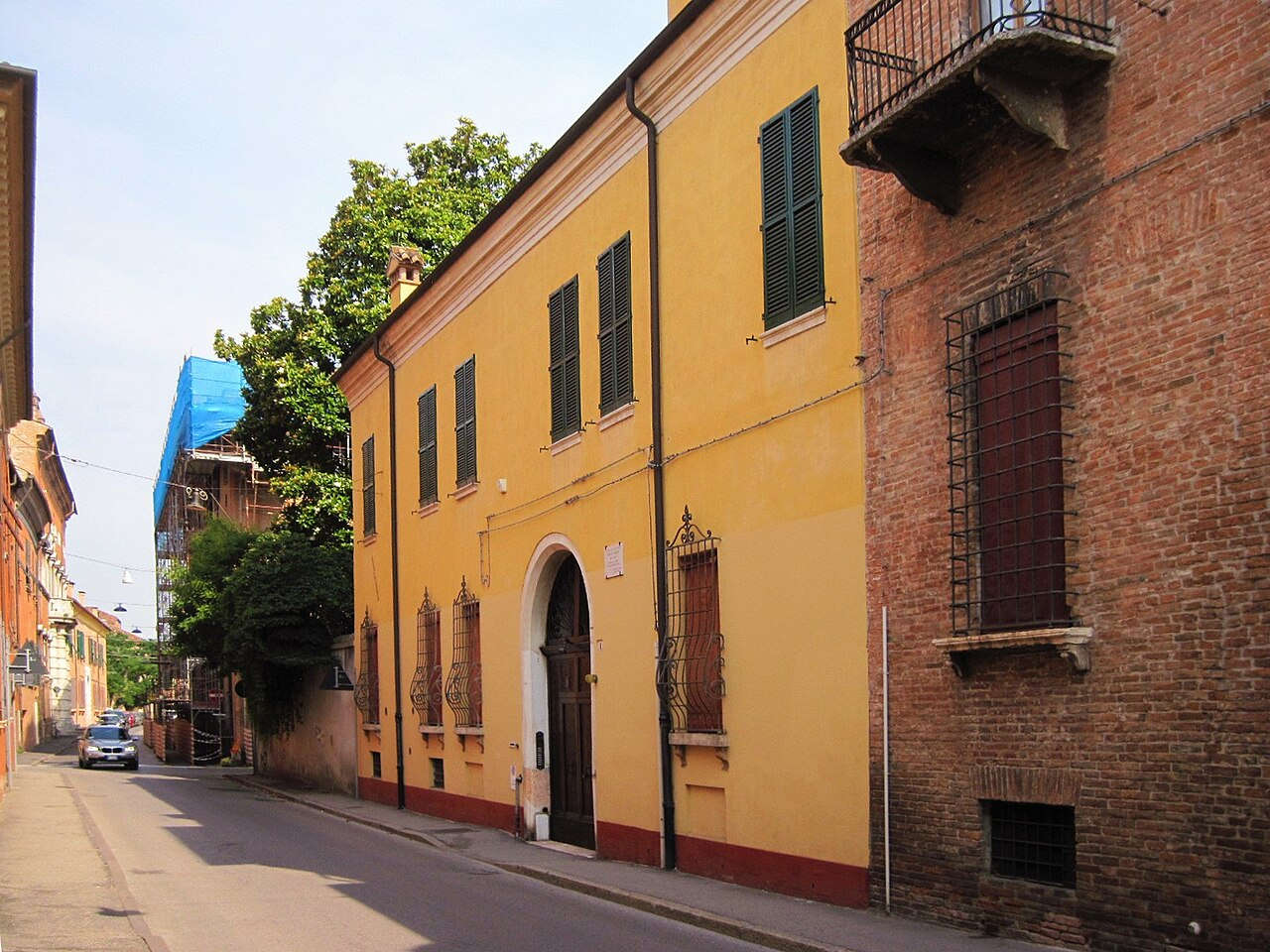
10. Spanish School
The Spanish School on Via Vittoria represents a significant testimony to the richness and diversity of synagogues that populated Ferrara. In the 16th century, the city had at least ten synagogues, both public and private, scattered on different streets. Sephardic Jews, known as "Spanish and Levantine," arrived in Ferrara in 1492 at the invitation of Duke Ercole I d'Este, after their expulsion from Spain. Considered a separate "Nation" from the papal administration than the Italian and German Jews, they were allowed to keep their own synagogue, precisely the Scola Spagnola, in Via Gattamarcia (today Via della Vittoria, 41). This privilege was maintained even after pontifical legislation in 1620 mandated the presence of only one synagogue in the city, leading to the closure of other private prayer houses.
Tragically, like other synagogues in Ferrara, the Spanish School was devastated by the Nazi-Fascists in 1944. Today the synagogue is closed, and part of its furnishings have been moved elsewhere. Photographic documentation has made it possible to reconstruct its features: ornate walls, a large aron on the eastern wall, and a bimah (a kind of pulpit) separate from the aron, resembling a ship's stern castle, from which the rabbi led the community. A plaque affixed to the exterior wall commemorates the invitation of Duke Hercules I in 1492 and the destruction of the synagogue in 1944, a symbol of the spread of Sephardic culture in Italy and Europe.
